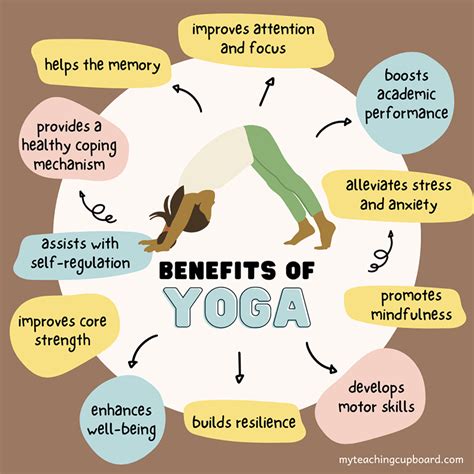Unlocking the Mental Health Benefits of Yoga for Children: A Holistic Approach
Introduction
In recent years, mental health concerns among children have skyrocketed, with issues like anxiety, depression, and stress becoming more prevalent. As families and educators search for non-invasive and holistic ways to nurture emotional well-being, yoga has emerged as a promising solution. Once considered an ancient spiritual practice, yoga is now integrated into schools, homes, and therapeutic programs across the globe. But how exactly does yoga benefit children’s mental health? This article takes a deep dive into the science, philosophy, and practical application of yoga to reveal its transformative power for young minds.
Key Concepts
- Mind-Body Connection: Yoga combines physical postures (asanas), breathing exercises (pranayama), and meditation techniques to foster mental clarity and emotional regulation.
- Emotional Regulation: Through mindful breathing and movement, children learn to recognize and control their emotions more effectively.
- Neuroplasticity: Engaging in yoga exercises helps reshape neural pathways, promoting healthier cognitive functions and responses to stress.
- Self-Awareness: Yoga encourages introspection and mindfulness, helping children develop a better understanding of their thoughts and feelings.
- Community & Inclusion: Practicing yoga in a group setting fosters a sense of belonging, reducing feelings of isolation.
Historical Context
Yoga originated in India over 5,000 years ago, evolving through philosophical traditions like Hinduism, Jainism, and Buddhism. Initially intended for spiritual growth and enlightenment, yoga has since been adapted into various forms, including Hatha Yoga and Ashtanga Yoga, for broader physical and mental well-being. Its journey to the West began in the late 19th and early 20th centuries, gaining momentum in the 1960s with the rise of alternative therapies. Today, yoga is practiced worldwide, with growing attention to its benefits for mental health.
Current State Analysis
As schools and parents witness rising mental health challenges, yoga has become a popular intervention. Research suggests that regular yoga practice can improve children’s attention span, emotional stability, and social behavior. However, widespread adoption faces barriers, such as limited access to trained instructors and concerns about cultural appropriation. Additionally, while anecdotal evidence abounds, rigorous longitudinal studies are still needed to validate long-term benefits.
Practical Applications
- Classroom Integration: Schools can incorporate short yoga sessions during breaks to reduce stress and improve focus.
- Therapeutic Programs: Yoga therapy can complement treatment plans for children with anxiety, ADHD, or trauma-related disorders.
- Home Practice: Parents can encourage children to engage in family yoga sessions to build emotional resilience and bond through movement.
- Online Platforms: Apps and video platforms provide accessible resources for yoga practice outside traditional settings.
Case Studies
| Case Study | Participants | Intervention | Outcome |
|---|---|---|---|
| Mindful Schools Program | 200 Elementary Students | 15-Minute Yoga & Breathing Exercises Daily | Improved attention and reduced classroom disruptions |
| Trauma-Informed Yoga Therapy | Children with PTSD | Weekly Group Sessions | Decreased anxiety and better emotional regulation |
| Yoga4Classrooms Pilot Study | 50 Middle School Students | Short Yoga Breaks During Class | Reduced stress and improved peer relationships |
Stakeholder Analysis
- Parents: Seek tools to support their children’s emotional growth and well-being at home.
- Teachers: Need effective strategies to maintain classroom harmony and enhance learning.
- Healthcare Providers: Use yoga as an adjunct to traditional therapies for anxiety and behavioral disorders.
- Policymakers: Develop guidelines for integrating yoga into educational curricula.
Implementation Guidelines
Successful implementation requires collaboration between parents, schools, and mental health professionals. Schools should provide basic yoga training to teachers and create partnerships with certified instructors. It’s essential to adapt practices to children’s age and developmental stages, ensuring accessibility and inclusiveness. Consistency is key—short, frequent sessions are more effective than occasional long ones. Additionally, schools and parents must respect cultural sensitivities by framing yoga as a wellness activity rather than a spiritual practice.
Ethical Considerations
- Cultural Appropriation: While yoga offers universal benefits, practitioners must acknowledge and honor its origins.
- Consent and Comfort: Children should have the option to opt out if they feel uncomfortable with any aspect of practice.
- Qualified Instructors: It’s crucial to ensure that teachers and therapists are adequately trained to prevent harm.
Limitations and Future Research
Despite promising results, there are limitations to the existing research on yoga and children’s mental health. Many studies rely on small sample sizes or subjective self-reports, which may not capture the full picture. Furthermore, long-term studies are needed to explore sustained impacts over years. Future research should focus on comparing yoga with other interventions and exploring its effectiveness across diverse demographic groups. As the field grows, developing standardized practices and metrics will be crucial to ensuring quality and consistency.
Expert Commentary
The collective evidence points toward yoga as a valuable tool for enhancing children’s mental health. However, it is not a panacea. Experts emphasize the importance of a multi-faceted approach—yoga works best when integrated with other supportive measures like counseling, healthy social environments, and physical activity. Educators and parents must also be mindful of the individual needs of children, avoiding a one-size-fits-all approach. As more research emerges, the hope is that yoga will become an accessible and inclusive part of every child’s developmental journey, equipping them with skills for lifelong well-being.








